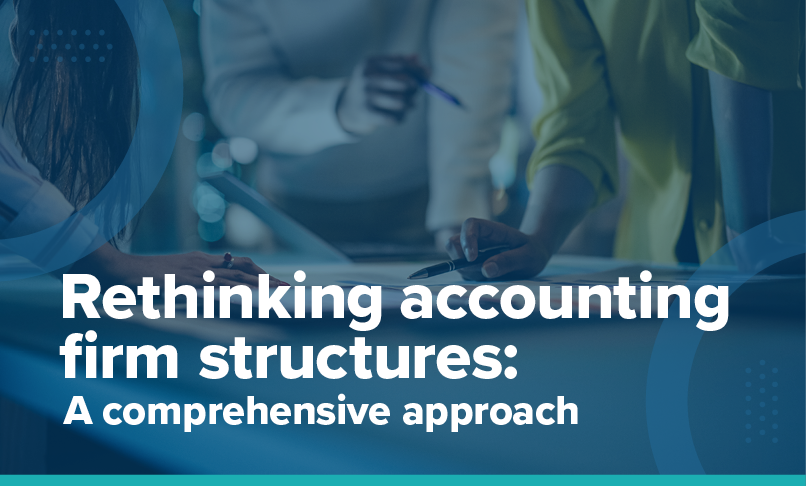In an era of rapid transformation, accounting firms must adapt to remain competitive. The challenges are multifaceted: technological advancements, shifting client expectations, regulatory complexities, and the urgent need for sustainable practices. Traditional hierarchical structures, designed for stability rather than adaptability, often struggle to meet these demands.
The Pentagon Model: A powerful framework
The Pentagon Model, a five-dimensional framework, provides a compelling blueprint for reimagining accounting firm structures. By focusing on client-centricity, technology and innovation, people and culture, sustainability and responsibility, and global reach, firms can position themselves for long-term success.
Beyond the Pentagon Model: exploring alternative structures
While the Pentagon Model offers a robust approach, other organizational structures may be suitable depending on specific firm needs and strategic goals.
Traditional hierarchical structure:
Pros: Clear chain of command, well-defined roles, and established processes.
Cons: Can be rigid, slow to adapt, and may lead to siloed thinking.
Matrix structure:
Pros: Encourages collaboration, fosters cross-functional teams, and can be effective for complex projects.
Cons: Can lead to confusion, conflicting priorities, and requires strong communication and coordination.
Flat hierarchy:
Pros: Empowers employees, promotes innovation, and can improve decision-making speed.
Cons: May lack clear leadership and direction, requires strong self-management skills, and can be challenging to scale.
Hybrid structures:
Pros: Combines the best aspects of different structures, offers flexibility, and can adapt to changing circumstances.
Cons: Can be complex to implement and manage, requires careful planning and communication.
Additional considerations for modern accounting firms
As the industry continues to evolve, firms must consider these additional factors when designing their organizational structures:
- Remote work and flexible work arrangements: The rise of remote work and flexible work arrangements is reshaping traditional office structures. Firms may adopt hybrid models to attract and retain talent.
- Outsourcing and offshoring: Leveraging a trusted partner in creating offshore centers that enable firms to build capacity, take on additional clients, and scale sustainably is core to all proposed structures.
- Data security and cybersecurity: Robust data security measures are essential to protect sensitive client information and mitigate cyber risks.

- Regulatory compliance: Staying compliant with evolving regulations is crucial. Firms may need to establish dedicated compliance teams or outsource compliance functions.
- Digital transformation: Embracing digital technologies can enhance efficiency, improve decision-making, and deliver innovative client services.
- Talent development and retention: Investing in employee development and creating a positive work culture are essential for attracting and retaining top talent.
Adopting an alternative firm model isn’t just a structural change—it’s a mindset shift. It requires firm leaders to move away from rigid hierarchies and embrace flexibility, collaboration, and continuous learning.
The future of accounting firms lies in their ability to innovate and adapt while staying true to their purpose of delivering value to clients, employees, and society – ensuring that firms remain relevant and sustainable in the decades to come.

